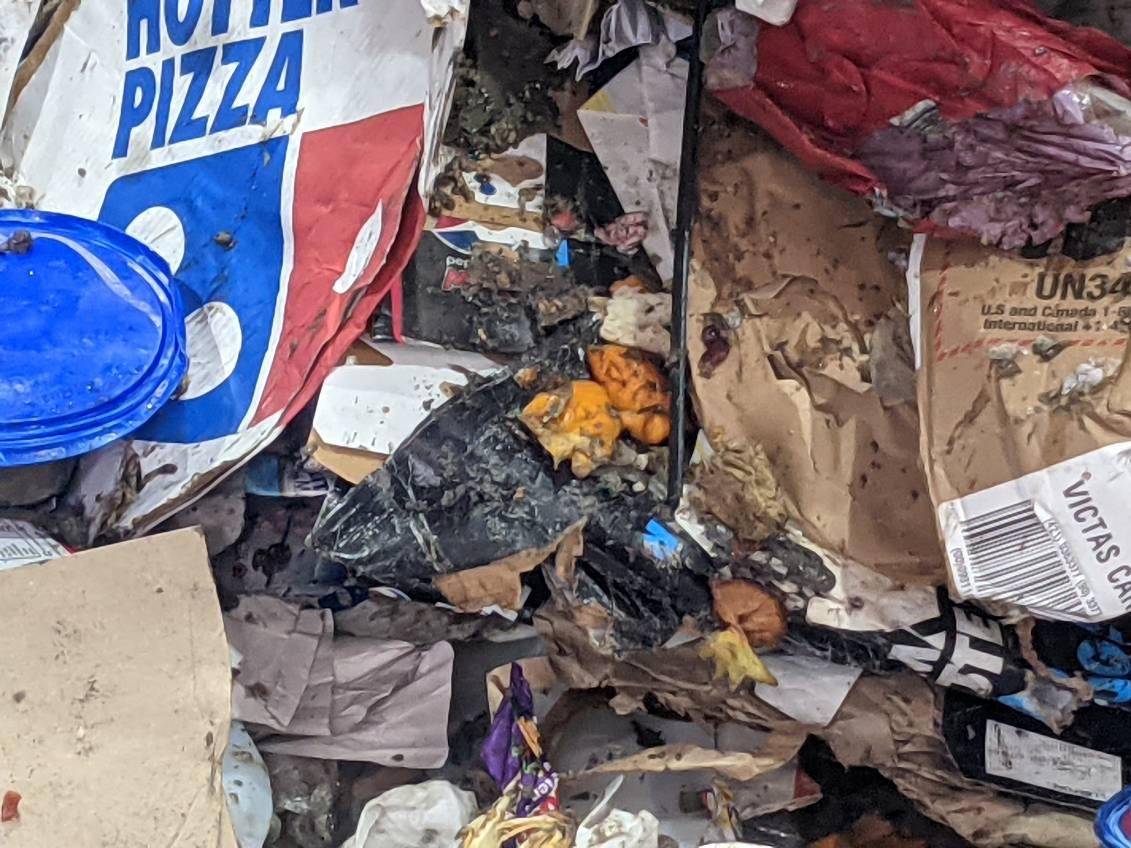The four-bin waste and recycling system we use within our community has been instrumental in diverting our waste from landfill, and promoting a more sustainable future. However the effectiveness of this system hinges on residents’ participation.
Contamination of recycling bins with non-recyclable materials is a significant issue for our community’s Waste Disposal workers; if crews don’t identify and remove these contaminants, the entire batch of recycling material will be rejected by processing facilities.
Images top to bottom: A healthy batch of recyclables collected from yellow bins; Two examples of contaminated recycling batches collected from the community’s yellow bins
Waste Disposal worker Graeme ‘Jock’ Dowie has found an enormous range of unrecyclable items inside the community’s yellow bins, including kitchen scraps, clothes, fabric bags, nappies, doonas, pillows, vacuum cleaners, dog blankets, foam, tyres, green waste, and kids toys. “Those things should be going to the Transfer Station,” Jock explains. If residents put them into their coloured bins, he says, they are effectively “contaminating a whole batch to save a dollar.”
The high volume of bins collected each day makes manually removing contaminants from trucks a dangerous practice. “If you think about three points of contact,” Jock says, referring to the golden rule of climbing safety, “and 800 to 1000 bins every run,” you’ll understand why trying to remove items from the truck is such a risky business.
The way you bin your recyclables is also something to think about, specifically avoiding the common practice of putting recycling into plastic bags before placing these in your yellow bin. These bags don’t get opened, but are “knocked straight out of the assembly line” by the automatic arm at the recycling facility and sent to landfill, says Jock.
Re-familiarise yourself with the guidelines for each bin. The red bin is for general waste only, while the yellow bin is for approved recyclables like paper, cardboard, and plastic containers. Food scraps and garden waste belong in the green bin, and glass bottles and jars should be placed in the purple bin.
But it’s not just about what you put inside your bins – it’s where you place your bins, too.
If your bins are touching one another or are placed too close to walls or other blockages, you’re inadvertently creating problems for workers. “You can get the bin-lifting arm in,” Jock explains, “but once the bin is raised off the ground, the other bins will be knocked over.”
Heeding the stickers placed on bins by our collection crews is crucial. These stickers highlight common mistakes and provide guidance for improved sorting and bin placement.
By taking a few extra moments to sort waste and place bins correctly, residents can significantly contribute to the success of the four-bin system, benefiting the environment and maximising recycling while making work significantly less troublesome for our Waste Disposal workers.
For more information on Waste Disposal, visit our Waste and Recycling page.



